And now for the Gwalior photos....
K is telling you about Gwalior, I will give you the photos.
These are from the Jain sculptures on the way up to the fort, just some of the smaller details, the full statues were not very photogenic :-)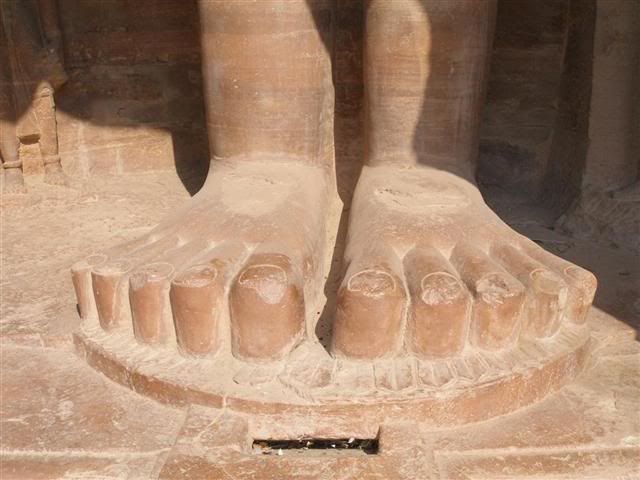

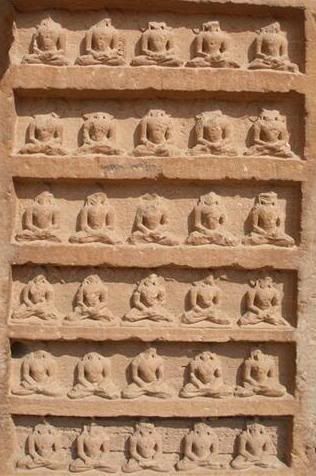
We started with the Man Singh Palace...a pleasingh place :-)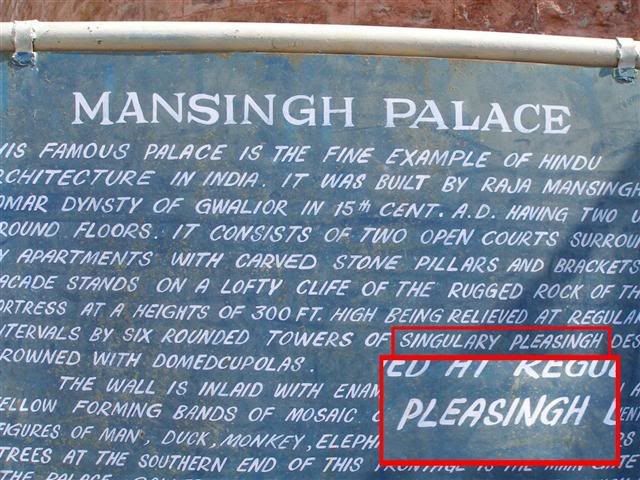
The detail on the palace is amazing! So much colour and whimsical images.
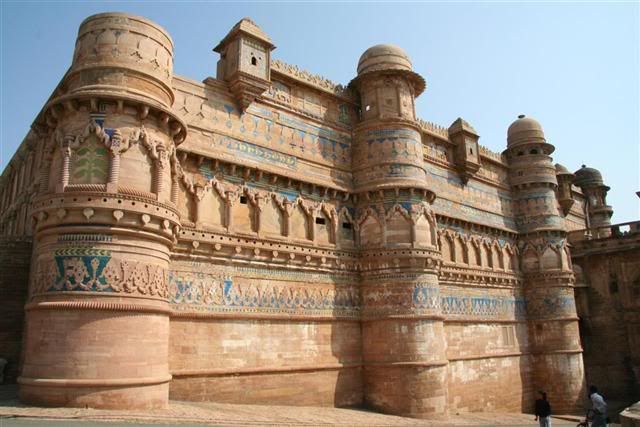
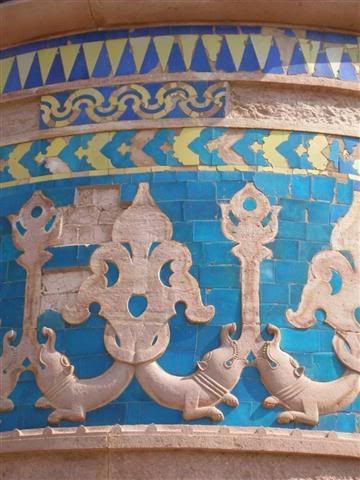

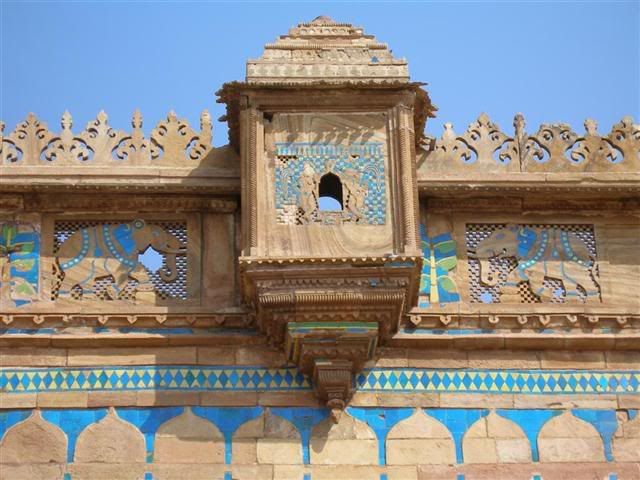


Our best bat photo yet! Look at all of them!!!!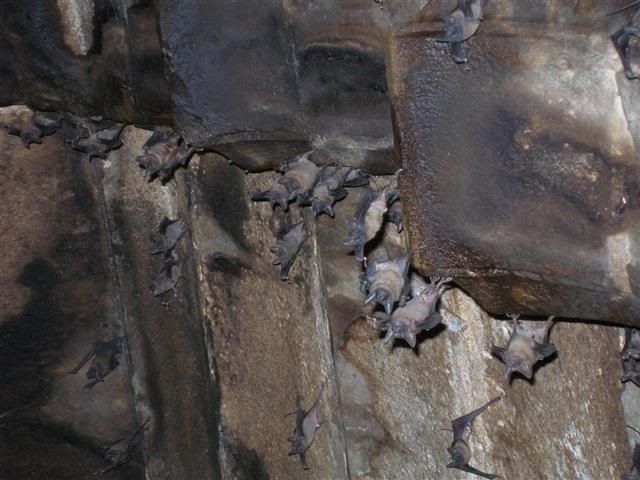
Another part of the fort...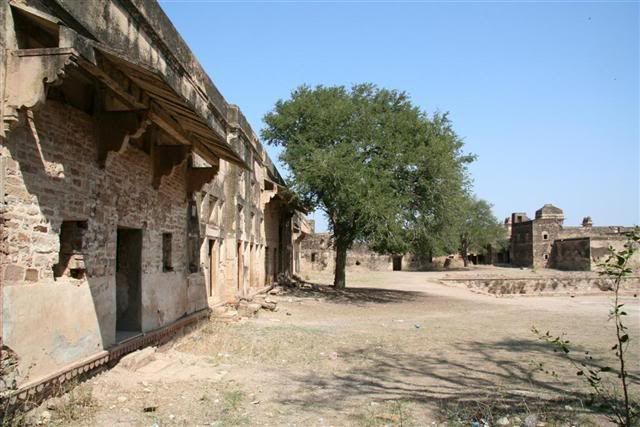
And some interesting detail on one of the fort walls...
The views over the surrounding towns....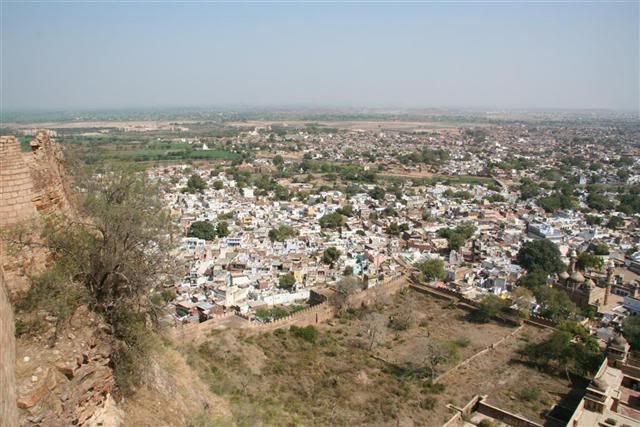
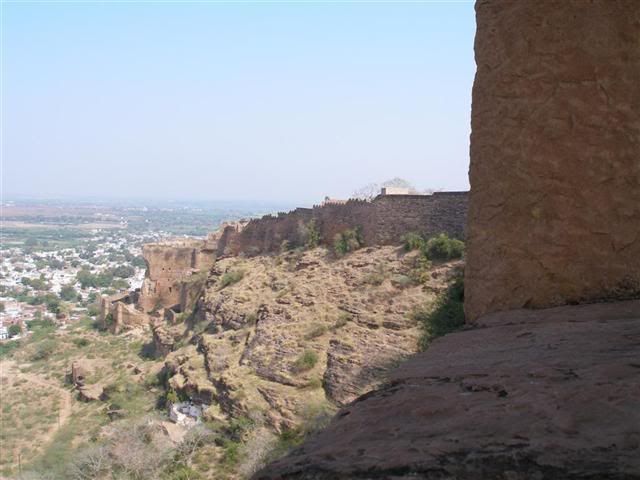
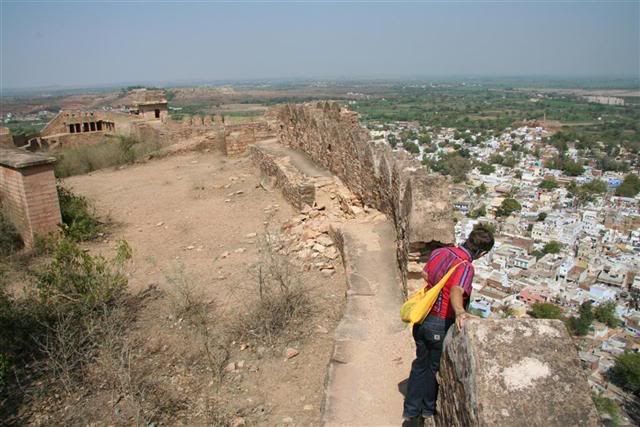
Can you see the pen of buffaloes?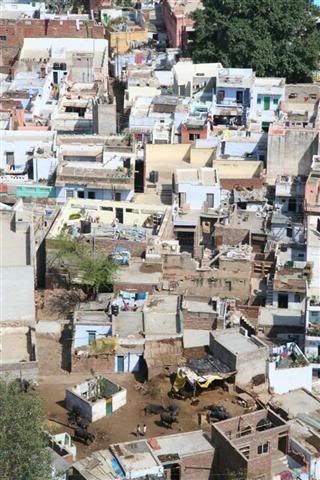
We are off to Rajasthan tomorrow morning...Pushkar. We will catch up when we can (and when we can find a decent connection). Until next time...a very late goodnight from Agra(vation)...
Wednesday, February 28, 2007
Salaam!
After the Taj Mahal visit we were incredibly tired and hungry. We ate a dissatisfying breakfast of greasy paratha and neglected our distasteful coffee. We returned to base to get forty winks before we continued with our site seeing day.
Next we took a journey out to the Fatehpur Sikri, the city of the third great Mughal Akbar and grandfather of Shah Jahan (of infamous Taj Mahal fame). Although only occupied for fourteen years it has left its mark in the history of India. Akbar was illiterate but this did not prevent him from making a lot of achievements during his rein. Around him he had his 'nine jewels' which were his advisors. Akbar studied and discussed many religious texts, these included the Koran, the bible, the great writings of Hinduism (the Rig Vedas, Purana, Mahabarata etc) as well as Buddhism, Jainism and Judaism. He eventually created his own religion that believed in one god only but incorporated parts of each faith. This is evident in the detailing of his buildings, you can see date trees that represent Islam - there is no symbolic representation in Islam however date trees are in abundance in Mecca and as a result artisans often employ there image as a sign of their faith. There are swastikas representing Hinduism as well domed arches in the shape of a cathedral to indicate Christianity. Akbar had three wives, one Muslim, one Christian and the other Hindu. He built quarters for them in the appropriate styles of their faith. although he had many wives and concubines he never had any children. He went to visit Sheikh Salim Chisti at Sikri, he being a holy man so that he may enlist their prayers. The Sheikh told Akbar that he would have three sons. Soon, one of his wives was pregnant and the prophecy became fulfilled over time. Akbar built a new capital at Sikri, in honour of the saint and soon after the palaces of Fatephur were built. When the Sheikh passed away Akbar had a tomb built in his honour.
Sandstone was Akbar's favorite building material. This is the Panch Mahal, it would have original had scented grass screens to protect the women inside form the sun and heat, as well as keep them away from onlookers.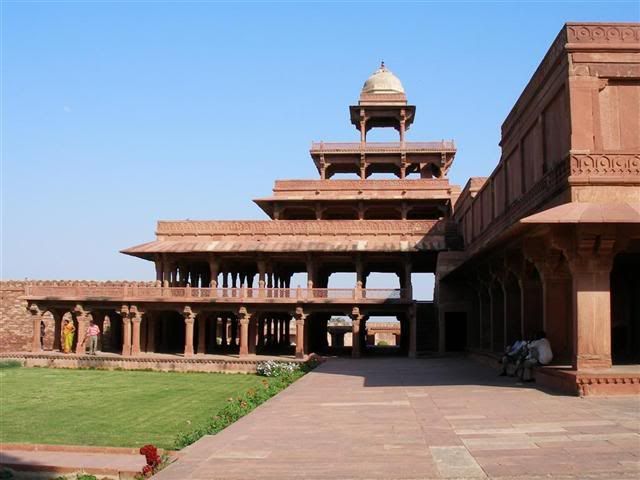
There are many buildings mainly empty shells but beautifully preserved. 
In the middle of this pool which would have been filled with rose scented water, the musicians of the court would play to Akbar who sat upon a nearby platform. The acoustics would have been amazing.
Akbar’s rather large stone bed, still all of his concubines would not fit on it, they queued outside waiting to accommodate the emperors needs!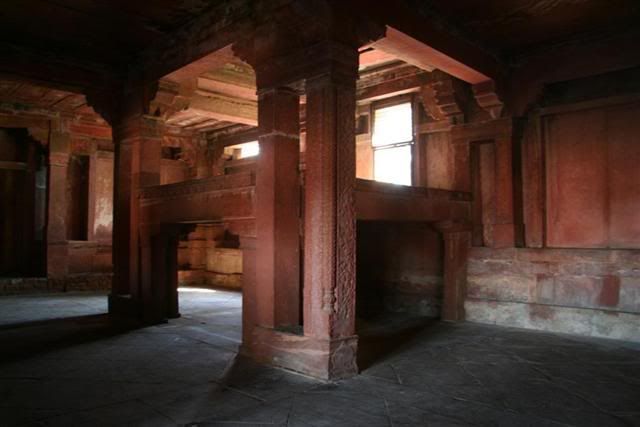
An example of the date trees representing Mecca.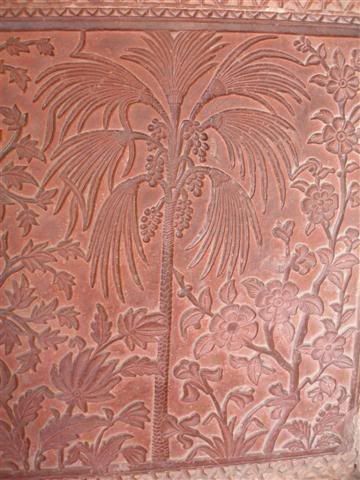
An intricate lotus design supporting for raised platforms. Akbar sat in the middle and would debate with four of his advisors.
Some detail...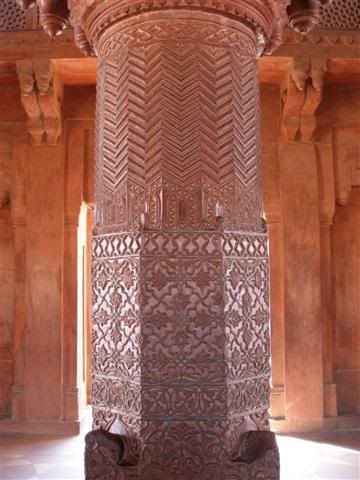
In the adjacent mosque - the Jama Masjid which contains the Sheikhs tomb K and I sat for a while after fighting off students who wanted to explain to us the mosque hopefully to get money although they insisted that they were not trying to be guides. They did pester us a lot. I managed to have some conversations with people, I shall write about what I learned in another post. This mosque is a Sufi mosque, Sufis are Sunnis, they can celebrate God through music unlike other more orthodox Islamic sects which believe that music distracts one from God. There were musicians and a singer seated at the front of the tomb, we sat with them for a while. Inside some tombs, women will tie threads in the hope that their wishes will be fulfilled, they hope for children or husbands. I believe that this is a practice of Sufis only although I cannot be sure. Men were also taking in flowers and candies as offerings, I was informed that this was not like Pooja in Hinduism but comparable to what the women were doing.
When we headed back to Agra we saw these deer.
Some more shots of traffic - we do spend a lot of time in it after all! These guys were ducking under the load.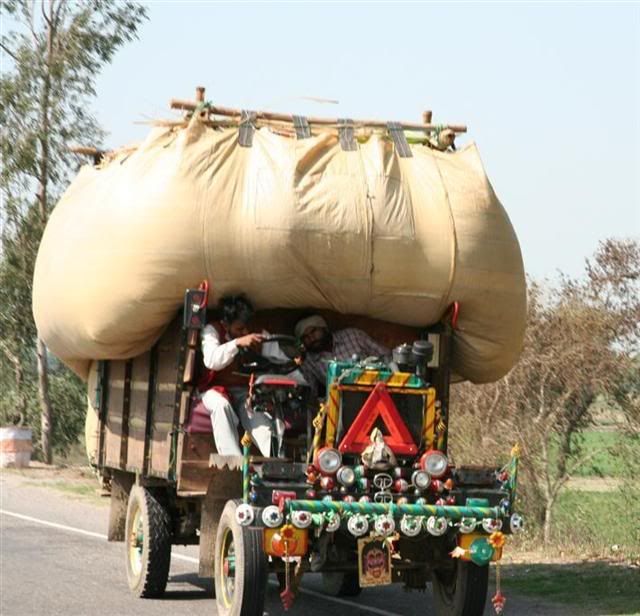
We see many convoys of half made trucks driving along the roads, they await the chassis to be built. We are not sure if the buyer of the engine and the wheelbase arranges their own styling of its body to meet their needs.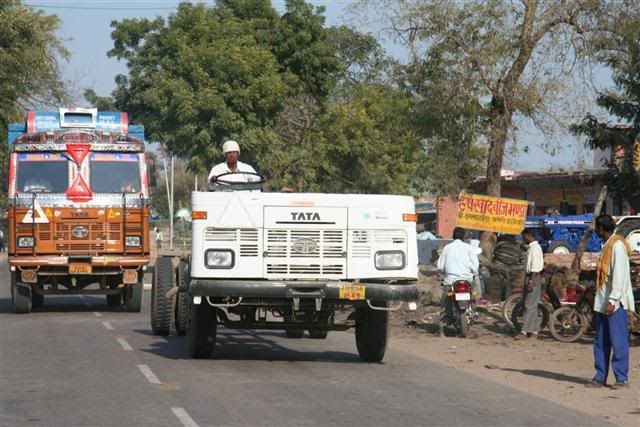
We did get to see the outside of the Agra Red Fort but ended up giving it a miss. We hope to see the one in Delhi sometime.
Thus ends the photos from Agra :-)
Salaam!
Finally I present to you some photos of the Taj Mahal :-) We did not get the classic shot from the front but I am sure that you would have seen this many times over :-) Please refer to our posts to read about the experience.
We arrived early. The mist became thicker over the first hour as we awaited the morning sunshine.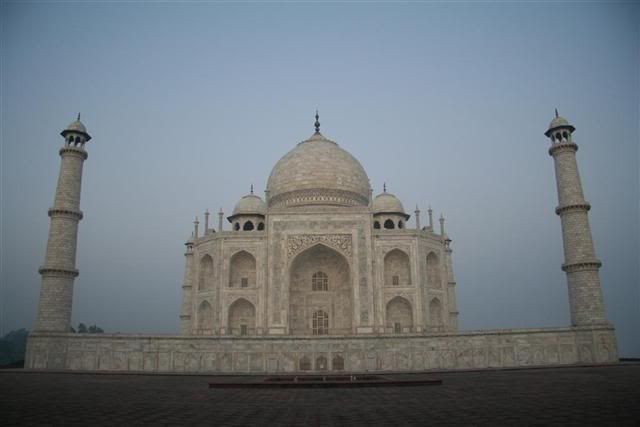
Unusually we approached the Taj from the side.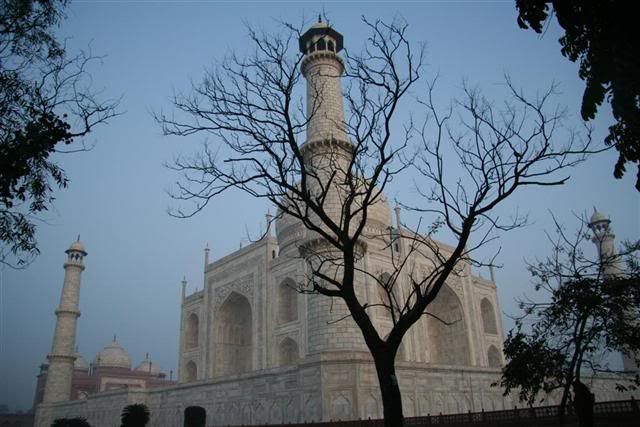
The mist made the experience very atmospheric and gently revealed the splendour as it dispersed.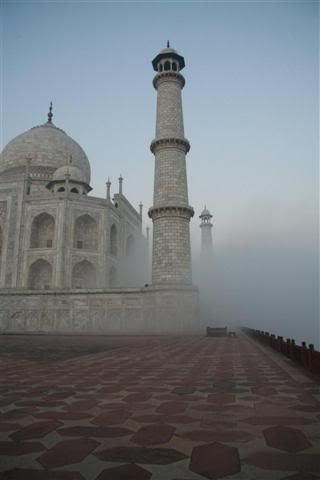
It was amazing to watch the sunrise and see the hues change on the surface of the marble.
As the mist cleared the beautiful and intricate detailing was revealed.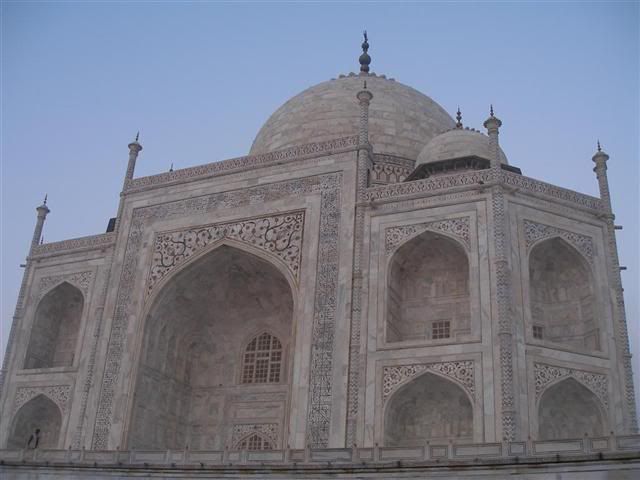

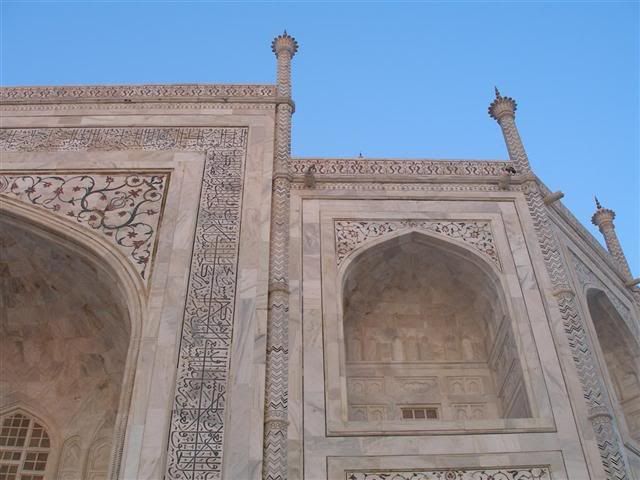
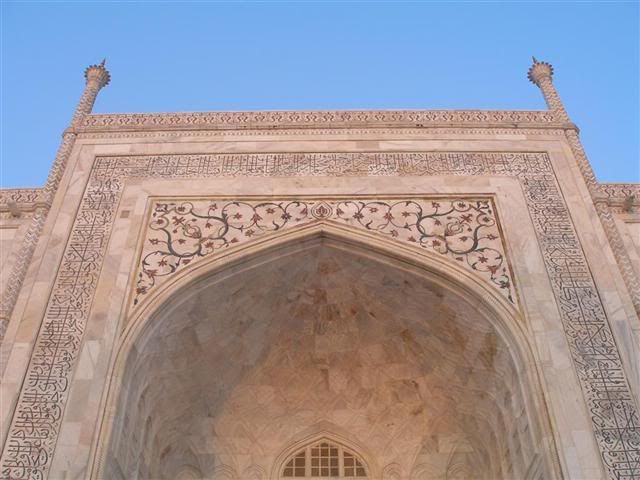

...a closer view of the script.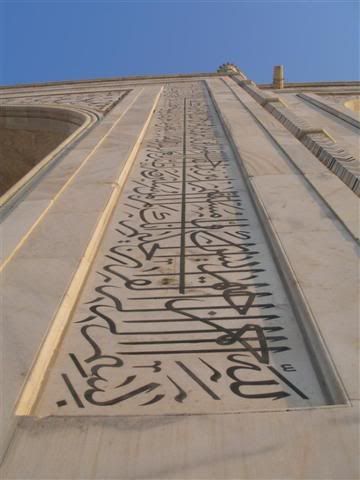
Here are some shots of the beautiful inlay, I have already described the materials used.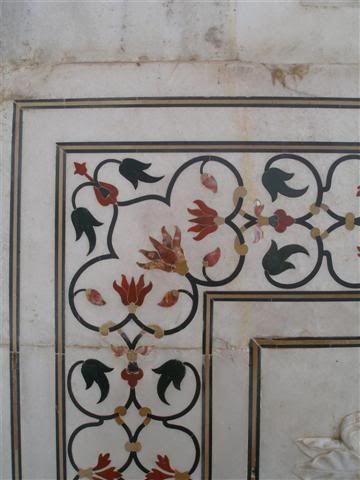
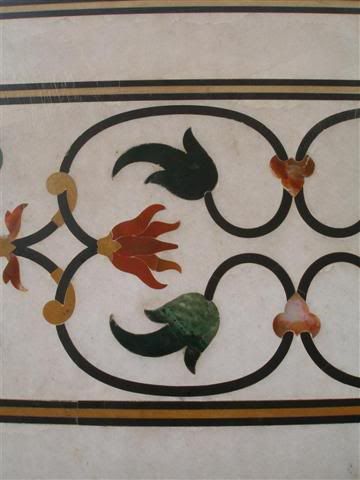
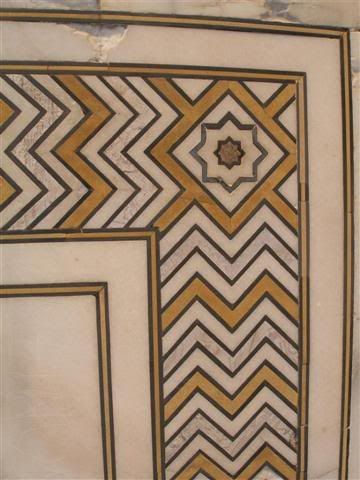
Here are some of the beautiful carvings close up that can be found on the surface of the marble, often unobserved in photos due to the popularity of pictures being taken from a distance.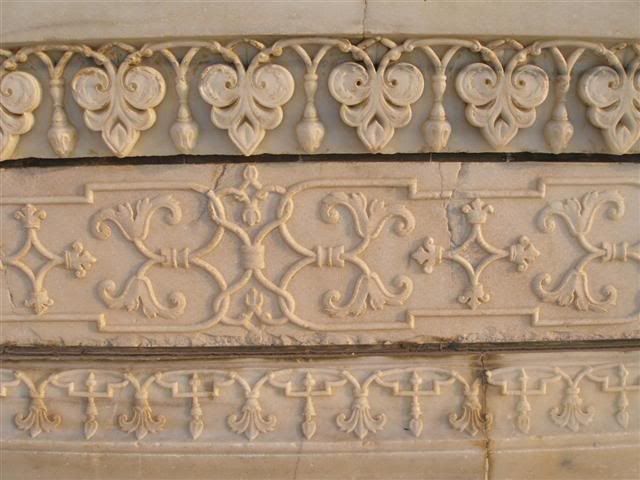
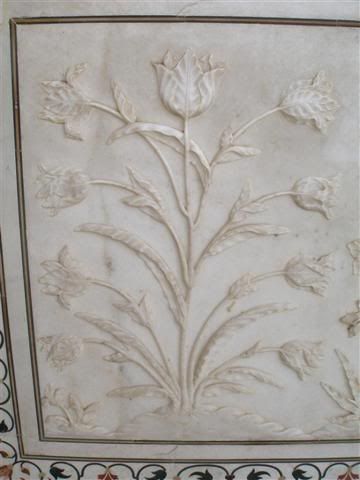
The domes of the archways are shaped even further when you see them close.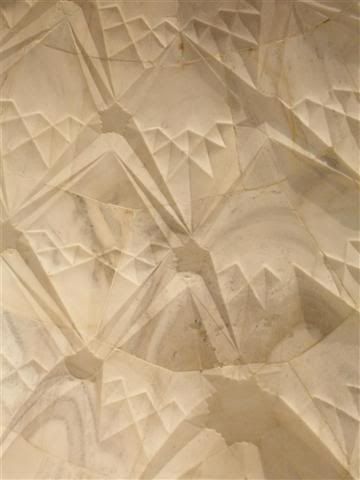
A closeup of a minaret.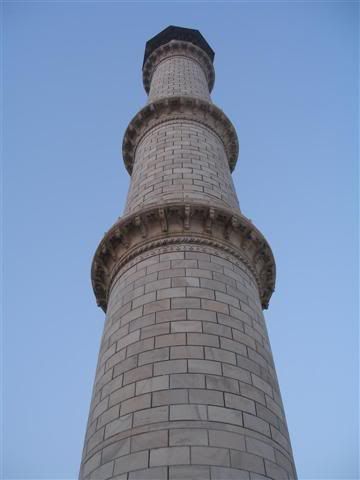
An example of one variation in the tilework.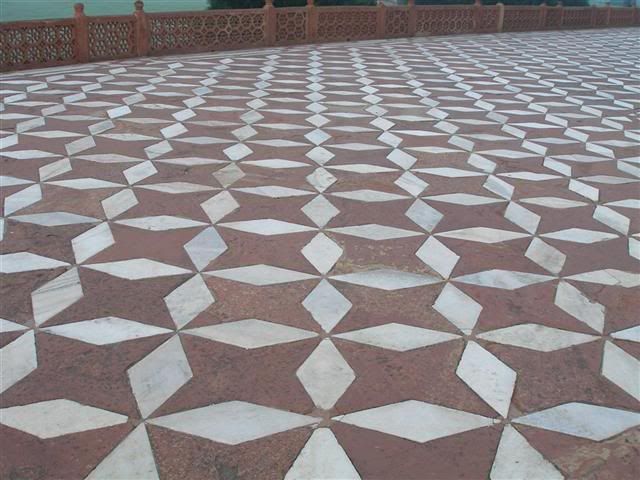
There were many couples enjoying the view and soaking up the atmosphere.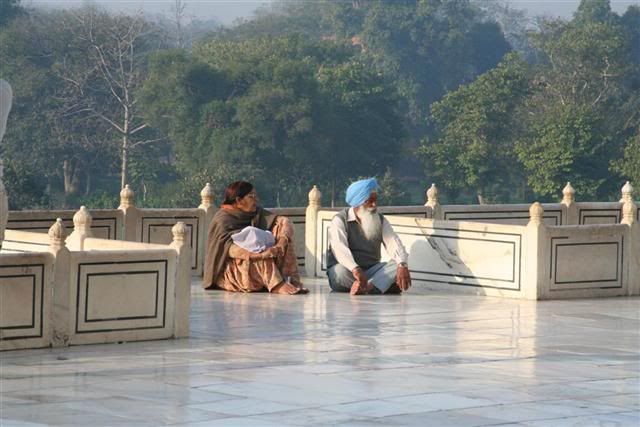
Part of the gardens as viewed from the platform of the Taj.
The gateway that you walk through as you approach from the front.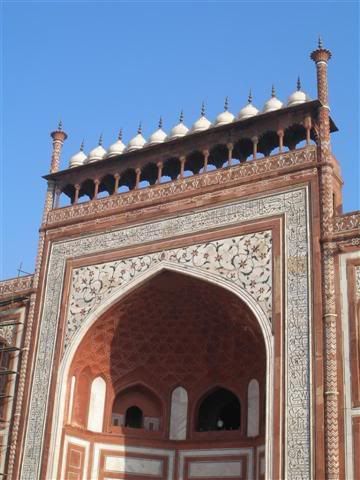
The adjacent mosque.
Inside the mosque.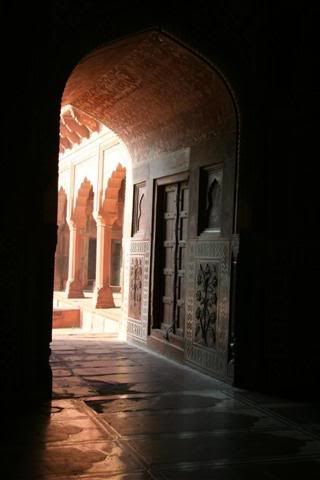

One of K's artist shots - no alcohol was involved in the making of this picture :-)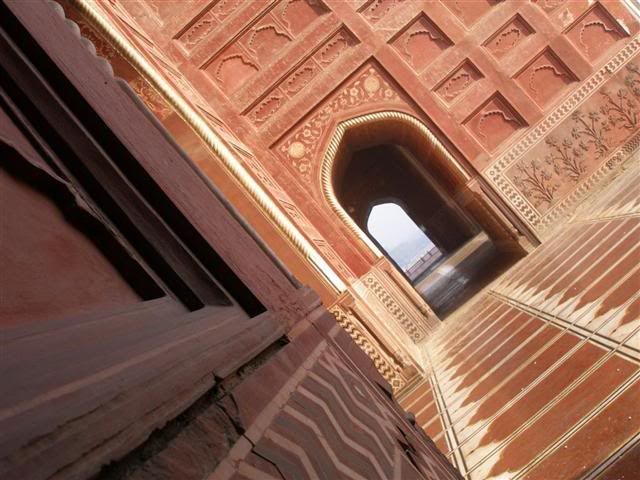
It is an amazing experience to have come here to see this, we almost gave it a miss. I will always be in wonder and delight beholding the memory that we cast our shadows at the Taj Mahal.
As we left we finally saw the Taj in all it's daytime glory.

